
Overland Tech and Travel
Advice from the world's
most experienced overlanders
tests, reviews, opinion, and more
Outdoor Retailer, day 1
Overland Tech and Travel arrived at Outdoor Retailer in sunny Salt Lake City this afternoon. We managed to visit a couple dozen booths before the happy hours began. Over the next three days we will be reporting on new gear as well as just cool stuff. Follow our Flickr Outdoor Retailer set as well (http://www.flickr.com/photos/conserventures/sets/72157630877676310/with/7701752420/).
Here's a preview:
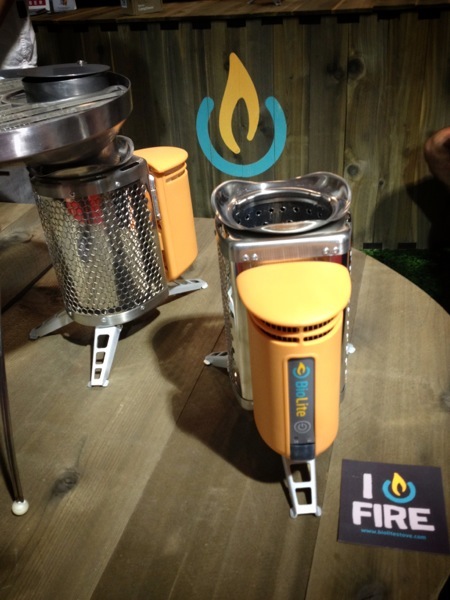
BioLite stove: burns wood (think Kelly kettle on steroids) and generates electricity for charging phones and laptops. Brilliant. A prototype heat-concentrating cooktop, below, was also on display. BioLite.com
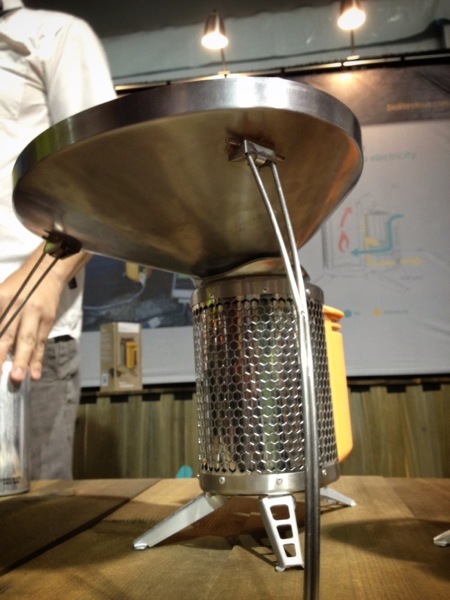
Stealth gray KTM 950 Adventure parked in the shade outside the south entrance.
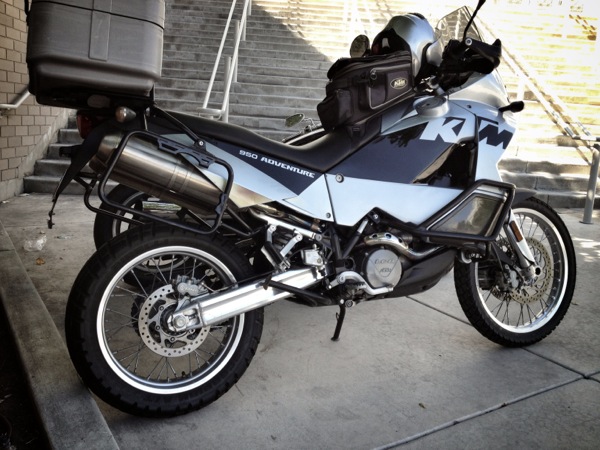
Zippo's beautifully crafted brushed "aluminum" Jeep JK Wrangler, with embossed doors, flame grille, and lighter rear rack box.
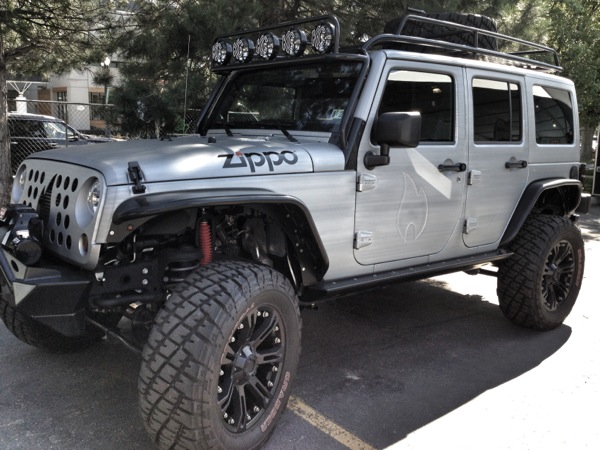
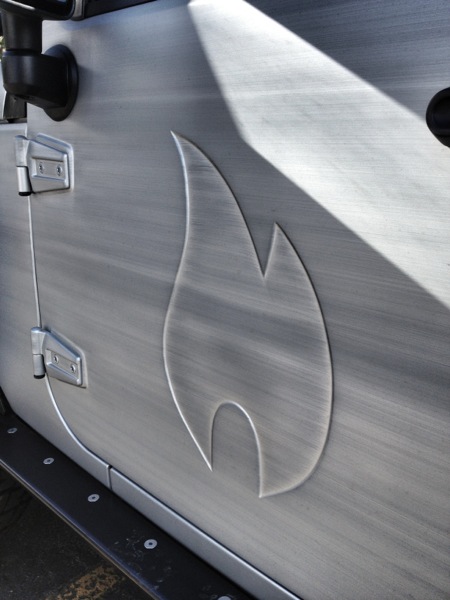
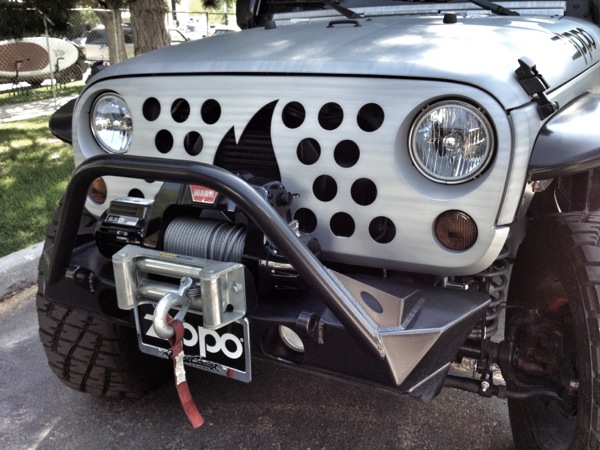
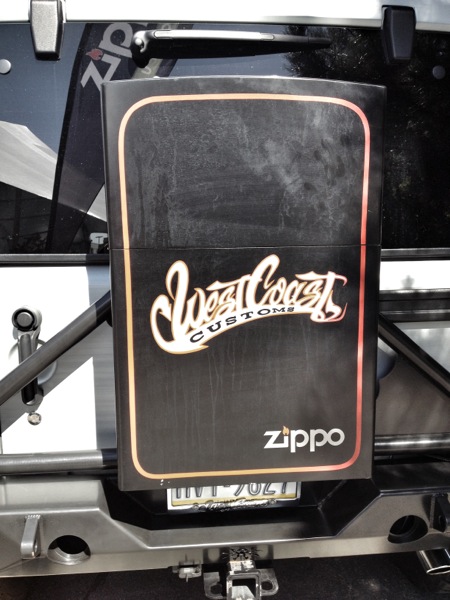
Dahon bicycles fold up into small packages, perfect for overlanding around the globe.
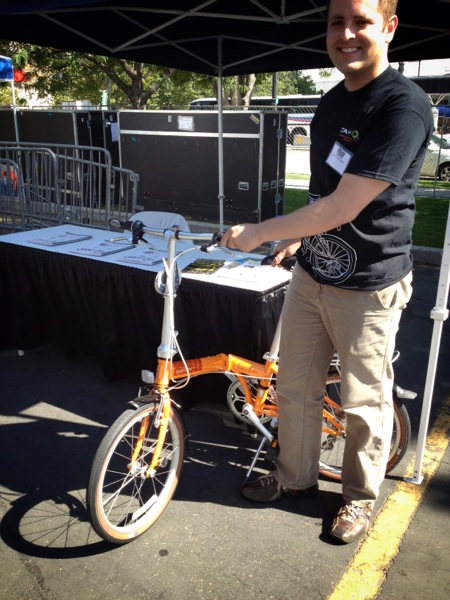
Lifeproof's incredibly slender iPhone case is nevertheless shock-resistant (two-meter drop), dustproof, and waterproof to a depth of six feet - which means your phone will now easily survive being dropped in the toilet.
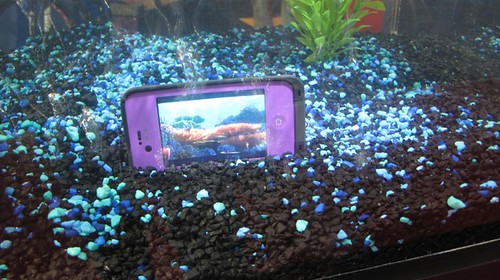
GoPro's display featured this spectacular replica of a legendary Rothmans Paris-Dakar Porsche 911 SC RS.
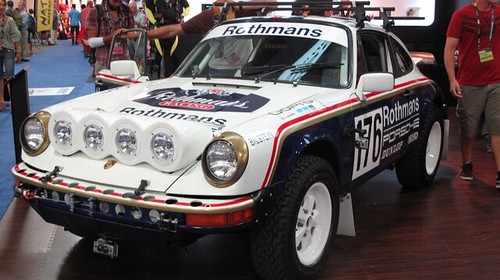
Two Sahara veterans reunite
 In 1975, Squadron Leader Tom Sheppard led the Joint Services Expedition on the first west to east crossing of the Sahara Desert, from the Atlantic Ocean to the Red Sea—a trek that covered 7,500 miles and took 81 days coast to coast. The team used four of the very first production forward-control 1-tonne Land Rovers, two of which were equipped with powered-axle trailers driven from the rear PTO of the vehicles. In addition to completing the route, team members conducted a series of gravity measurements along the way, collected minerals, lizards, and bilharzia-bearing snails for researchers at the British Museum, and experimented with navigation techniques combining astro-fixes and sun compass bearings with calculations provided by what was then a cutting edge piece of technology: a Hewlett-Packard HP65 programmable pocket calculator.
In 1975, Squadron Leader Tom Sheppard led the Joint Services Expedition on the first west to east crossing of the Sahara Desert, from the Atlantic Ocean to the Red Sea—a trek that covered 7,500 miles and took 81 days coast to coast. The team used four of the very first production forward-control 1-tonne Land Rovers, two of which were equipped with powered-axle trailers driven from the rear PTO of the vehicles. In addition to completing the route, team members conducted a series of gravity measurements along the way, collected minerals, lizards, and bilharzia-bearing snails for researchers at the British Museum, and experimented with navigation techniques combining astro-fixes and sun compass bearings with calculations provided by what was then a cutting edge piece of technology: a Hewlett-Packard HP65 programmable pocket calculator.
Sheppard, already a desert veteran by that time, nevertheless learned much that would stand him in good stead on numerous solo Sahara treks by Land Rover and Mercedes G-Wagen, knowledge he subsequently shared through such books as the seminal Vehicle-Dependent Expedition Guide and Four-by-four Driving (not to mention his more introspective and lavishly photographed works such as Nobility of Wilderness and Quiet for a Tuesday: Solo in the Algerian Sahara).
In 1975, Squadron Leader Tom Sheppard led the Joint Services Expedition on the first west to east crossing of the Sahara Desert, from the Atlantic Ocean to the Red Sea—a trek that covered 7,500 miles and took 81 days coast to coast. The team used four of the very first production forward-control 1-tonne Land Rovers, two of which were equipped with powered-axle trailers driven from the rear PTO of the vehicles. In addition to completing the route, team members conducted a series of gravity measurements along the way, collected minerals, lizards, and bilharzia-bearing snails for researchers at the British Museum, and experimented with navigation techniques combining astro-fixes and sun compass bearings with calculations provided by what was then a cutting edge piece of technology: a Hewlett-Packard HP65 programmable pocket calculator.
Tom, already a desert veteran by that time, nevertheless learned much that would stand him in good stead on numerous solo Sahara treks by Land Rover and Mercedes G-Wagen, knowledge he subsequently shared through such books as the seminal Vehicle-Dependent Expedition Guide and Four-by-four Driving (not to mention his more introspective and lavishly photographed works such as Nobility of Wilderness and Quiet for a Tuesday: Solo in the Algerian Sahara).
Recently, at a Land Rover press event, Tom was reunited with one of the JSE vehicles, still mounted with the sun compass that carried him safely across the desert. He sent us these photos.
Tom Sheppard, left, discusses the 101FC with Roger Crathorne, Land Rover engineering legend.
Of course, for Tom, just standing around reminiscing would never do . . .
What would you have given to be that grinning passenger . . .
Vehicle rentals in New Zealand?
My wife and I are headed to New Zealand in March and I wanted to see if you knew of anybody down there who did vehicle rentals? We are looking at renting a pop-top camper van to spend our 2 weeks traveling around the south island. Any leads would be helpful! Thank you for your help.
~ Beau Johnston (www.LivingOverland.com Gourmet Cooking * Travel * 4WD) via email
How do I find information for shipping a bike or vehicle overseas?
What are some resources for someone wanting to ship a Jeep overseas, such as China or Australia?
- David T., USA (via email)
A home in the bed of your truck: Four Wheel Campers
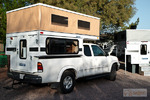 FWC has been an OX sponsor since the beginning.
FWC has been an OX sponsor since the beginning.
Over the years, we have been through a lot of vehicle-based camping setups, beginning with a couple of sleeping bags rolled out on the roof rack of my FJ40. We’ve gone minimalist with backpacking tents and stoves, luxurious with family-sized cabin tents and padded cots. We’ve tried roof tents, trailers, truck-bed mattresses. For some time we owned a WilderNest, a pickup shell with a cunning roof that flipped sideways to turn into a bed, with an enormous tent erected semi-automatically above it. I remember spending a mostly sleepless night trying to brace the frame of that spinnaker-like tent in a 40mph Sea of Cortez Norte. It was never quite the same afterward. Of all the setups that have come and gone, the one about which we wax most nostalgic is our Four Wheel Camper. Mounted first on a 1990 4WD Toyota pickup powered by a willing but overmatched 22RE four-cylinder, then on a 2000 4WD Tacoma with the 3.4-liter six (60 percent more power and better gas mileage), we put over 150,000 miles on that camper, using it as a mobile base for dozens of freelance magazine assignments and several books.
 FWC has been an OX sponsor since the beginning.
FWC has been an OX sponsor since the beginning.
Over the years, we have been through a lot of vehicle-based camping setups, beginning with a couple of sleeping bags rolled out on the roof rack of my FJ40. We’ve gone minimalist with backpacking tents and stoves, luxurious with family-sized cabin tents and padded cots. We’ve tried roof tents, trailers, truck-bed mattresses. For some time we owned a WilderNest, a pickup shell with a cunning roof that flipped sideways to turn into a bed, with an enormous tent erected semi-automatically above it. I remember spending a mostly sleepless night trying to brace the frame of that spinnaker-like tent in a 40mph Sea of Cortez Norte. It was never quite the same afterward. Of all the setups that have come and gone, the one about which we wax most nostalgic is our Four Wheel Camper. Mounted first on a 1990 4WD Toyota pickup powered by a willing but overmatched 22RE four-cylinder, then on a 2000 4WD Tacoma with the 3.4-liter six (60 percent more power and better gas mileage), we put over 150,000 miles on that camper, using it as a mobile base for dozens of freelance magazine assignments and several books.
At the time, we lived on a wildlife refuge seven miles down a rough dirt road, so even driving to town for groceries gave the rig a workout. Nevertheless, the sum total of my repairs to that camper was a rebuild of the door, which had begun to sag and needed reinforcing.
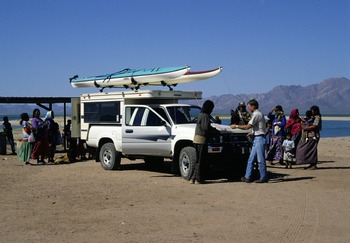 Our FWC in the 1990s, Punta Chueca, Sonora, Mexico, visiting Seri Indian country.We loved the FWC’s 30-second transformation into a full-standing-headroom camper with queen-sized bed, fridge, sink, and stove, and a comfortable settee. Sit-down snack at a rest stop on a highway trip? Easy. A couple of years into ownership, we experienced another Sea of Cortez Norte more furious than the first—and slept like babes. The pop-up roof didn’t even quiver. Despite the comfort and strength, the camper’s relatively feathery, aluminum-framed 700 pounds barely taxed the truck, and never kept us from reaching secluded backcountry hideouts.
Our FWC in the 1990s, Punta Chueca, Sonora, Mexico, visiting Seri Indian country.We loved the FWC’s 30-second transformation into a full-standing-headroom camper with queen-sized bed, fridge, sink, and stove, and a comfortable settee. Sit-down snack at a rest stop on a highway trip? Easy. A couple of years into ownership, we experienced another Sea of Cortez Norte more furious than the first—and slept like babes. The pop-up roof didn’t even quiver. Despite the comfort and strength, the camper’s relatively feathery, aluminum-framed 700 pounds barely taxed the truck, and never kept us from reaching secluded backcountry hideouts.
Gripes? Sure, we had a few. The water tank was too small and mounted too high. The main cabinet doors were flimsy sliding panels of 1/8th-inch plywood. And the three-way fridge gave up even slightly cooling its contents in any ambients over 90ºF. But they were tiny gripes compared to the consummate ease of pulling into a camp spot and having a home ready in less than a minute.
I write this up front so you don’t think what follows is some slavish encomium concocted in trade for sponsorship or ad revenue: We developed our enthusiasm for Four Wheel Campers the old-fashioned way—at full retail. So we jumped at the chance to make a second pilgrimage to the factory in Woodland, California, to visit with owners Tom and Celeste Hanagan, who’ve become good friends over the years. (Alas, this time we weren’t there to pick up a new camper.)
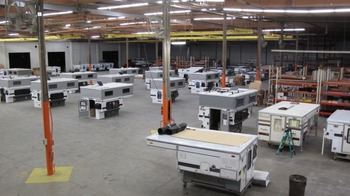 New factory floor in Woodland, CA. Older models belonging to customers, in for modifications or repairs after accidents, are in the lower right.Actually, it’s a different factory, significantly larger than the old one. A good thing, it seemed, because the space was clearly being utilized to the fullest already. A triple row of campers, aligned as if by laser, stood waiting for successive construction steps, from welding of the bare, elegant aluminum frame to final touches in flooring and lighting. There’s now more room for the ancillary shops such as upholstery and carpentry, which were formerly wedged into corners.
New factory floor in Woodland, CA. Older models belonging to customers, in for modifications or repairs after accidents, are in the lower right.Actually, it’s a different factory, significantly larger than the old one. A good thing, it seemed, because the space was clearly being utilized to the fullest already. A triple row of campers, aligned as if by laser, stood waiting for successive construction steps, from welding of the bare, elegant aluminum frame to final touches in flooring and lighting. There’s now more room for the ancillary shops such as upholstery and carpentry, which were formerly wedged into corners.
Most interestingly, I got an inside look—literally—at the evolution of the Four Wheel Camper under Tom and Celeste’s guidance. The small, high-mounted water tank I mentioned on ours? It’s been nearly doubled in size (now 22 gallons) and moved to the floor under a settee at the front of the camper, perfect for weight distribution. The cabinets now have proper hinged doors. The fridge option now includes a compressor-driven unit guaranteed not to go on strike in summer. And the corners of the main entrance door have been radiused to add significant rigidity.
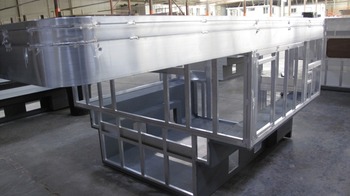 The amazing aluminum frame, a work of art.There was more. The roof—which on ours comprised three sections, yet never leaked despite the fact that I through-drilled it to mount racks for our sea kayaks—is now a one-piece, screw-free aluminum sheet that can’t leak. Much of the interior plywood is now superb multi-laminate European birch; exterior insulation is now rigid foam rather than fiberglass. Appliances have been upgraded, headroom augmented without changing the travel profile, the dining table is now a portable unit that can be used outside—nothing seemed to have escaped scrutiny and improvement.
The amazing aluminum frame, a work of art.There was more. The roof—which on ours comprised three sections, yet never leaked despite the fact that I through-drilled it to mount racks for our sea kayaks—is now a one-piece, screw-free aluminum sheet that can’t leak. Much of the interior plywood is now superb multi-laminate European birch; exterior insulation is now rigid foam rather than fiberglass. Appliances have been upgraded, headroom augmented without changing the travel profile, the dining table is now a portable unit that can be used outside—nothing seemed to have escaped scrutiny and improvement.
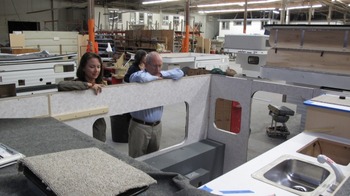 Tom and Roseann looking at an interior under construction.A lot of those improvement can even be applied to older Four Wheel Campers. In a corner of the factory was a cluster of customer-owned campers in various stages of repair and renewal. One vintage model at least 20 years old was receiving a new one-piece roof; others were having skins, water tanks, upholstery, or appliances replaced and updated. It was a reminder that a Four Wheel Camper is a genuine investment—as if prices on the used market weren’t reminder enough. We sold ours (to pay off our land) for 85 percent of what we paid for it new, despite all the use and mileage.
Tom and Roseann looking at an interior under construction.A lot of those improvement can even be applied to older Four Wheel Campers. In a corner of the factory was a cluster of customer-owned campers in various stages of repair and renewal. One vintage model at least 20 years old was receiving a new one-piece roof; others were having skins, water tanks, upholstery, or appliances replaced and updated. It was a reminder that a Four Wheel Camper is a genuine investment—as if prices on the used market weren’t reminder enough. We sold ours (to pay off our land) for 85 percent of what we paid for it new, despite all the use and mileage.
Ack. I just reminded myself that we sold it. Take my advice: If you buy one, keep it. Who needs land if you have a home on wheels?
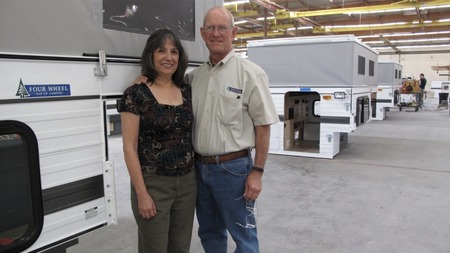 Tom and Celeste Hanagan, the power duo behind the quality and success of Four Wheel Campers.
Tom and Celeste Hanagan, the power duo behind the quality and success of Four Wheel Campers.
Land Rover's Terrain Response explained
I recently purchased a 2011 Land Rover LR4 HSE with the heavy-duty package. I’d like to know in detail how the Terrain Response system works so that I can make full use of it. Simple labels on the settings, like “Snow,” “Sand,” etc., are not enough! In particular, I’d like to know all of the vehicle’s attributes that are controlled by the Terrain Response system (such as throttle response, transmission, brakes, electronic traction control) and how each is modified in each of the settings.
I have tried to get this information from Land Rover USA and from my dealer with no success. Surely this information is available. How can I find it?
Thanks!
Jan N, Los Alamos, New Mexico, USA
Overland Review: Sportsmobile, 50 years strong
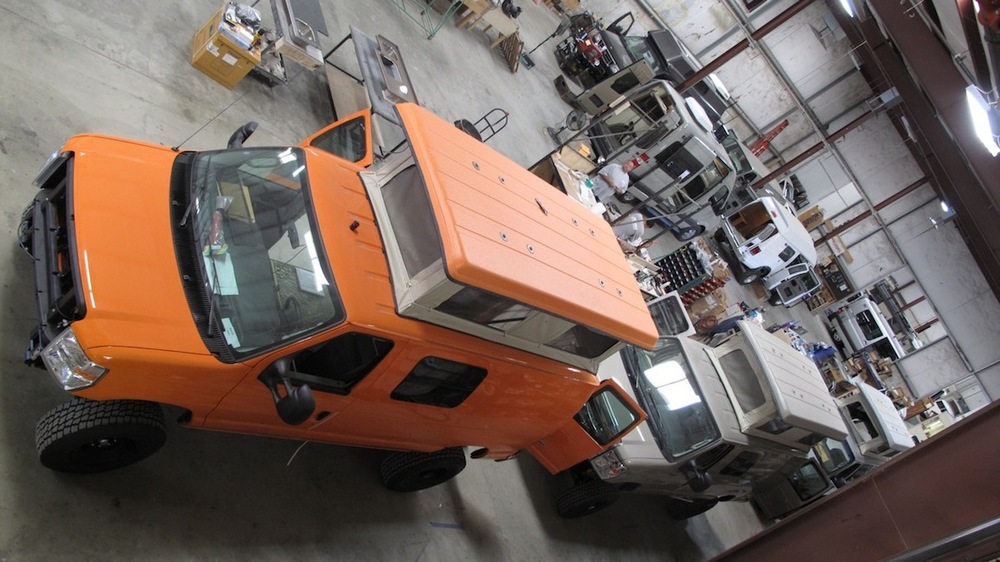 Put the words “conversion” and “van” in the same sentence, and you’re likely to induce imagery of smoked bubble windows and orange shag carpeting. You can almost hear strains of KC and the Sunshine Band. A Sportsmobile is a different beast. More a remanufactured overlanding vehicle on a Ford or Chevy platform than a mere “conversion,” the Sportsmobile is not only a seminal product in its field (2011 marks the company’s 50th anniversary), but can be configured as a heavy-duty, four-wheel-drive, self-contained camper capable of extended journeys in the most remote regions on earth.
Put the words “conversion” and “van” in the same sentence, and you’re likely to induce imagery of smoked bubble windows and orange shag carpeting. You can almost hear strains of KC and the Sunshine Band. A Sportsmobile is a different beast. More a remanufactured overlanding vehicle on a Ford or Chevy platform than a mere “conversion,” the Sportsmobile is not only a seminal product in its field (2011 marks the company’s 50th anniversary), but can be configured as a heavy-duty, four-wheel-drive, self-contained camper capable of extended journeys in the most remote regions on earth.
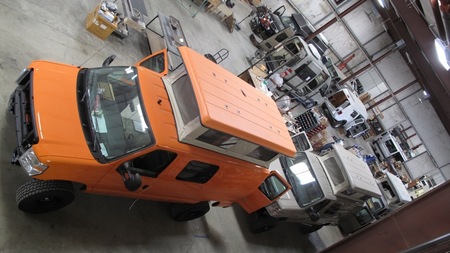 Put the words “conversion” and “van” in the same sentence, and you’re likely to induce imagery of smoked bubble windows and orange shag carpeting. You can almost hear strains of KC and the Sunshine Band. A Sportsmobile is a different beast. More a remanufactured overlanding vehicle on a Ford or Chevy platform than a mere “conversion,” the Sportsmobile is not only a seminal product in its field (2011 marks the company’s 50th anniversary), but can be configured as a heavy-duty, four-wheel-drive, self-contained camper capable of extended journeys in the most remote regions on earth.
Put the words “conversion” and “van” in the same sentence, and you’re likely to induce imagery of smoked bubble windows and orange shag carpeting. You can almost hear strains of KC and the Sunshine Band. A Sportsmobile is a different beast. More a remanufactured overlanding vehicle on a Ford or Chevy platform than a mere “conversion,” the Sportsmobile is not only a seminal product in its field (2011 marks the company’s 50th anniversary), but can be configured as a heavy-duty, four-wheel-drive, self-contained camper capable of extended journeys in the most remote regions on earth.
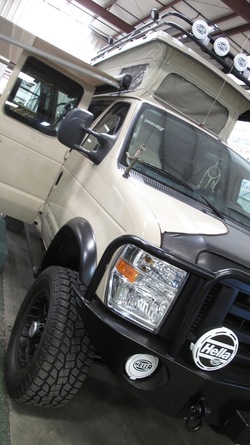 On a trip through California last month, we visited Alan Feld, the owner of Sportsmobile West (there are two other divisions as well), in his factory in Fresno, to see the entire process of building the vehicles, from stock van to completed Sportsmobile.
On a trip through California last month, we visited Alan Feld, the owner of Sportsmobile West (there are two other divisions as well), in his factory in Fresno, to see the entire process of building the vehicles, from stock van to completed Sportsmobile.
Once the minimal factory interior is removed from the van, the vast rectangular box is essentially a blank canvas, open to a number of semi-stock interiors or nearly any custom configuration a customer can dream up. If you want to go beyond the basics of stove, fridge, sink, bed, and toilet, you can add flat-screen TVs, captain’s chairs, furnaces and AC units, a shower—the list goes on. The roof can be permanent full-height or a retractable “penthouse.” Everything from counters to plumbing is of first-rate quality.
I enjoyed looking at the well-thought-out interiors, but it was the four-wheel-drive conversion process that most interested me. I’ve seen them done poorly and seen them done well, but rarely have I seen one done as well as here. So seamless is the installation that, looking at a half-finished chassis on a rack, it was impossible to tell where the Ford factory parts left off and the Sportsmobile parts took over—except that the latter were arguably stronger.
 The heavy-duty front axle, springs, and transfer case are all made in California. Furthermore, Alan has been on a mission to source as many components as possible from the U.S. and even his own state. He uses a stout, all-gear Atlas II transfer case (made in Paso Robles, CA), an equally stout Dynatrac Pro Roc 60 axle assembly, and, as of quite recently, leaf springs manufactured right there in Fresno. The extended-range fuel tanks are also manufactured in California.
The heavy-duty front axle, springs, and transfer case are all made in California. Furthermore, Alan has been on a mission to source as many components as possible from the U.S. and even his own state. He uses a stout, all-gear Atlas II transfer case (made in Paso Robles, CA), an equally stout Dynatrac Pro Roc 60 axle assembly, and, as of quite recently, leaf springs manufactured right there in Fresno. The extended-range fuel tanks are also manufactured in California.
The result is a comfortable and surprisingly capable machine—at the 2011 Overland Expo, even the veteran Camel Trophy team members who ran the Land-Rover-sponsored demonstration course were surprised at the Sportsmobile’s tolerance for side-slope angles. And it’s well-built enough that the company provides a 50,000-mile warranty.
 Mercedes Sprinter van camper
Mercedes Sprinter van camper Sprinter with bike bay in rear, camper in front.I should note that Alan is also using the Mercedes Benz Sprinter van as a base for some beautiful camper conversions. Although the four-wheel-drive version of the Sprinter is not (yet) available in the U.S., we do at least get the brilliant BlueTEC V6 turbodiesel, which is capable of 20-plus mpg on the highway. One completely self-contained unit I spent some time in was stickered around $75,000—a bargain considering the combination of Mercedes and Sportsmobile quality, and more so when compared with some far more expensive but troublesome “conversions” I’ve seen. It got me dreaming of that loop up through the Maritime Provinces we’ve always wanted to do. I’m beginning to think a “conversion van” might fit right into place between our Land Cruisers.
Sprinter with bike bay in rear, camper in front.I should note that Alan is also using the Mercedes Benz Sprinter van as a base for some beautiful camper conversions. Although the four-wheel-drive version of the Sprinter is not (yet) available in the U.S., we do at least get the brilliant BlueTEC V6 turbodiesel, which is capable of 20-plus mpg on the highway. One completely self-contained unit I spent some time in was stickered around $75,000—a bargain considering the combination of Mercedes and Sportsmobile quality, and more so when compared with some far more expensive but troublesome “conversions” I’ve seen. It got me dreaming of that loop up through the Maritime Provinces we’ve always wanted to do. I’m beginning to think a “conversion van” might fit right into place between our Land Cruisers.
Just to be sure: Despite lurking behind stacks of parts and peeking through closed doors at Alan’s factory, nowhere could I find a hidden stash of smoked bubble windows or shag carpet.
To buy or not to buy: 1991 Toyota Land Cruiser
I currently drive two different vehicles—a fuel sipping Ford Focus, mostly to cover the short distance to work, and a fuel-guzzling Ford F-250 diesel, mostly for fishing and hunting . My wife has been encouraging me to downsize my fleet and recently observed that one of her friends has a ’91 Land Cruiser for sale. “What about something like that?” was her question to me; it could get me out to some remote fishing spots as well as fit a couple car seats for transporting kids (which my old truck doesn’t do so well).
And so, I’ve been doing a little bit of looking into Land Cruisers. I have a few questions for you, if you don’t mind.
- This vehicle originally came from the States and has a fair number of miles on it (250,000). How many is too many? I’m currently driving a truck with 225,000 miles. So, it wouldn’t be a whole lot more than what I’m already driving, but certainly wouldn’t be a step toward a lesser-used vehicle, which would be nice for peace of mind.
- What sort of a ball-park price do you think is reasonable for a vehicle of that vintage? Obviously you won’t know the exact condition, but it seems to be in reasonable shape for its age. There is a bit of surface rust starting to show up on the back door, below the window, and just above the windshield. I don’t think that it has been abused, but it hasn’t been babied either.
- Would I be better off spending a bit more for a lower mileage vehicle? I need to keep my total purchase price below $10,000. This one is well below that. Unfortunately, there aren’t a lot of these available in Alberta, from what I’ve been able to find. I’d potentially consider importing something from the States if that made sense.
- Are other options worth looking at instead? I’ve thought about Jeeps (Wrangler and Cherokee) or picking up a 4Runner, both of which are probably better on fuel and a whole lot more common. I’d love to have a Tacoma, but won’t be able to find a 4-door in my price range.
Thanks for your feedback,
Robert Anderson via email, Blairmore, Alberta, Canada
Hint: When using “Search,” if nothing comes up, reload the page, this usually works. Also, our “Comment” button is on strike thanks to Squarespace, which is proving to be difficult to use! Please email me with comments!
Overland Tech & Travel brings you in-depth overland equipment tests, reviews, news, travel tips, & stories from the best overlanding experts on the planet. Follow or subscribe (below) to keep up to date.
Have a question for Jonathan? Send him an email [click here].
SUBSCRIBE
CLICK HERE to subscribe to Jonathan’s email list; we send once or twice a month, usually Sunday morning for your weekend reading pleasure.
Overland Tech and Travel is curated by Jonathan Hanson, co-founder and former co-owner of the Overland Expo. Jonathan segued from a misspent youth almost directly into a misspent adulthood, cleverly sidestepping any chance of a normal career track or a secure retirement by becoming a freelance writer, working for Outside, National Geographic Adventure, and nearly two dozen other publications. He co-founded Overland Journal in 2007 and was its executive editor until 2011, when he left and sold his shares in the company. His travels encompass explorations on land and sea on six continents, by foot, bicycle, sea kayak, motorcycle, and four-wheel-drive vehicle. He has published a dozen books, several with his wife, Roseann Hanson, gaining several obscure non-cash awards along the way, and is the co-author of the fourth edition of Tom Sheppard's overlanding bible, the Vehicle-dependent Expedition Guide.




